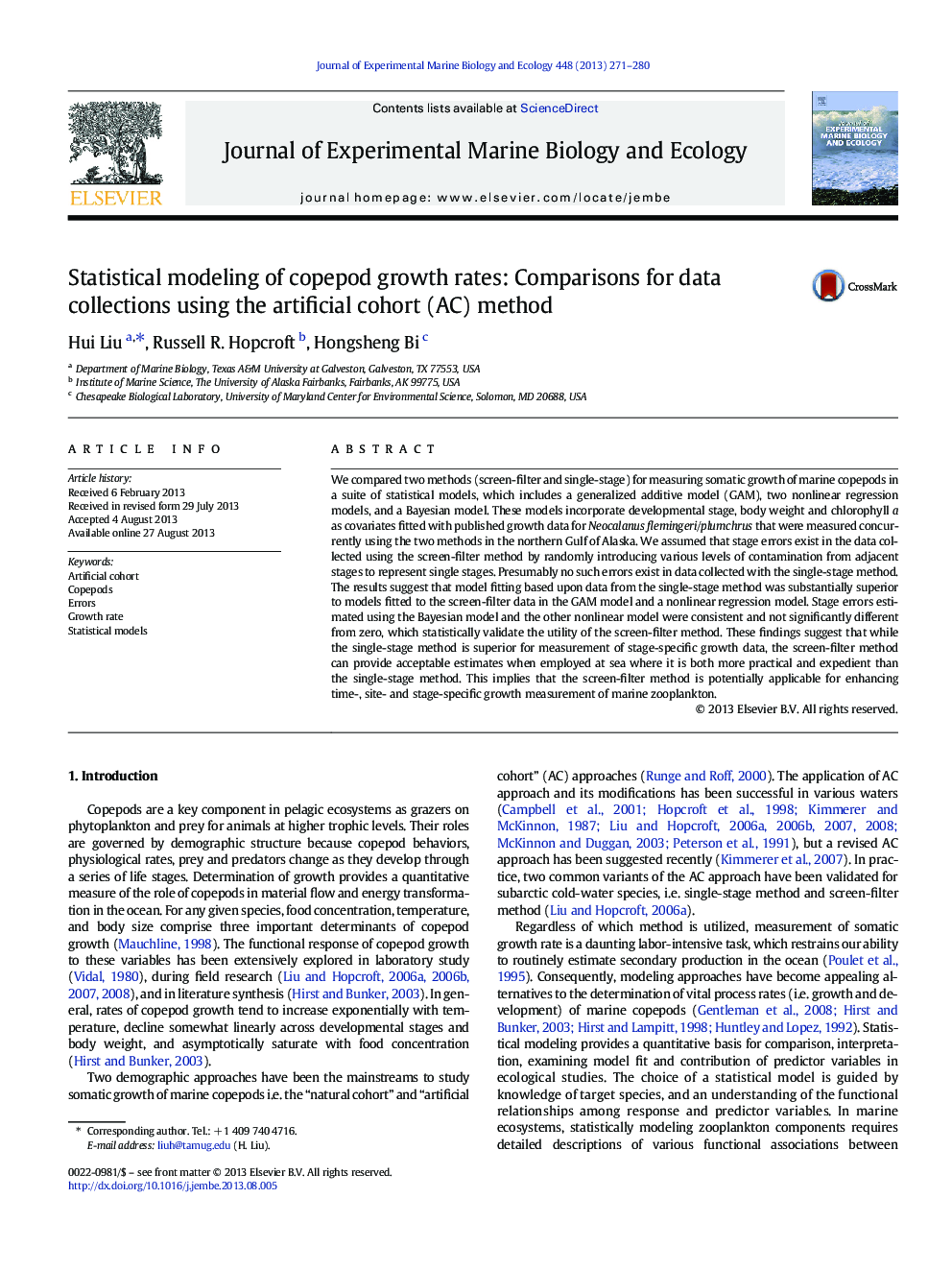| Article ID | Journal | Published Year | Pages | File Type |
|---|---|---|---|---|
| 6304406 | Journal of Experimental Marine Biology and Ecology | 2013 | 10 Pages |
Abstract
We compared two methods (screen-filter and single-stage) for measuring somatic growth of marine copepods in a suite of statistical models, which includes a generalized additive model (GAM), two nonlinear regression models, and a Bayesian model. These models incorporate developmental stage, body weight and chlorophyll a as covariates fitted with published growth data for Neocalanus flemingeri/plumchrus that were measured concurrently using the two methods in the northern Gulf of Alaska. We assumed that stage errors exist in the data collected using the screen-filter method by randomly introducing various levels of contamination from adjacent stages to represent single stages. Presumably no such errors exist in data collected with the single-stage method. The results suggest that model fitting based upon data from the single-stage method was substantially superior to models fitted to the screen-filter data in the GAM model and a nonlinear regression model. Stage errors estimated using the Bayesian model and the other nonlinear model were consistent and not significantly different from zero, which statistically validate the utility of the screen-filter method. These findings suggest that while the single-stage method is superior for measurement of stage-specific growth data, the screen-filter method can provide acceptable estimates when employed at sea where it is both more practical and expedient than the single-stage method. This implies that the screen-filter method is potentially applicable for enhancing time-, site- and stage-specific growth measurement of marine zooplankton.
Related Topics
Life Sciences
Agricultural and Biological Sciences
Aquatic Science
Authors
Hui Liu, Russell R. Hopcroft, Hongsheng Bi,
